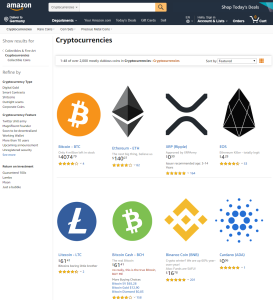The cryptocurrency space is full of scammers and jokesters—people who shill and people who get tattoos of confusing altcoins and then stop supporting those altcoins. Nearly every third headline reads like an April Fools’ joke…making it hard to tell which are parodies and which are sincere news items on this auspicious day, the first of April.
After careful investigation, we have confirmed that the follow gags are indeed intended to make you laugh and are not #realnews. Let’s start with the obvious cracks before we wend our way to the so-subtle-it-might-be-real-life jokes from today.
Coinbase should have added Ripple today…
It’s not a prank, just a sentiment, but lots of people are here for a good Ripple knock.
Tron founder gets nominated for a Nobel Economics Prize.
“It was a no-brainer really,” a Nobel official “explained” about Justin Sun’s nomination in this Crypto Briefing article. “Most economists hold Tron.” It is also a no-brainer that this is an April Fools’ joke.
Dogecoin is now worth two doge.
Trustnodes reported the breaking news that as of block 2,666,667, set for mining tomorrow, there will be a hardfork in the Dogecoin blockchain, making it so that going forward, one doge will be worth two doge. Honestly, Dogecoin was born as a crypto prank, but it’s taken on real life since Jackson Palmer came up with the idea in 2013. However, Palmer has long since ceased involvement with the project, making this article a transparent prank: It cited Palmer as announcing the upcoming hardfork. (It’s also nonsensical. So that’s a clue, too.)
Coin Center’s research director is heading to the SEC.
Peter Van Valkenburgh announced some “personal news” on Twitter this morning. He’s done at Coin Center, a non-profit for crypto public policy advocacy, to join the SEC as the commission’s new “crypto specialist.” Godspeed, Valkenburgh.
Amazon has adopted crypto.
Blockchain Headhunter, a blockchain recruitment group, posted on LinkedIn about how Amazon has started accepting cryptocurrencies including bitcoin, ether, Litecoin, EOS, XRP, and Cardano. The tech giant will also allow crypto trading. Hey, why not? Amazon Web Services is already knee-deep in blockchain. This is surely the natural next step…until you see the comments to the post all wish people a happy April first.

The Howey test was found to be invalid.
Coin Center, who published this article “proving” the invalidity of the Howey test, is full of April Fool’s spirit with its third appearance on our list today. The Howey test came out of a 1946 Supreme Court case SEC v. Howey Co. It determines whether something counts as an investment contract that falls under the jurisdiction of the SEC.
Crypto enthusiasts regularly debate whether cryptocurrencies fall within the test’s parameters, writes Coin Center communications director Neeraj Agrawal, but now they will no longer—thanks to the fact that the test has been “deemed invalid” due to the type of American flag flying over the court the day of SEC v. Howey Co. decision. Because the flag had a gold fringe on three sides, it “indicates the Court was in fact an admiralty court operating under martial law rather than, as previously thought, one operating under the United States Constitution.”
Though clearly a prank article, the story is convincingly technical (and worth a read).
Introducing Fedcoin.
Fedcoin, according to Messari, was “created in 1792 with the inception of ‘The United States of America’ (The United States), a nation state located in the North American continent.” It’s currently worth $1 and 0.000242 BTC. It’s managed by an organization known was the Federal Reserve, and its listed contributors include the Reserve’s chairs, past and present. All true facts about the USD, except that “Fedcoin” coincidentally came into existence over this past weekend.